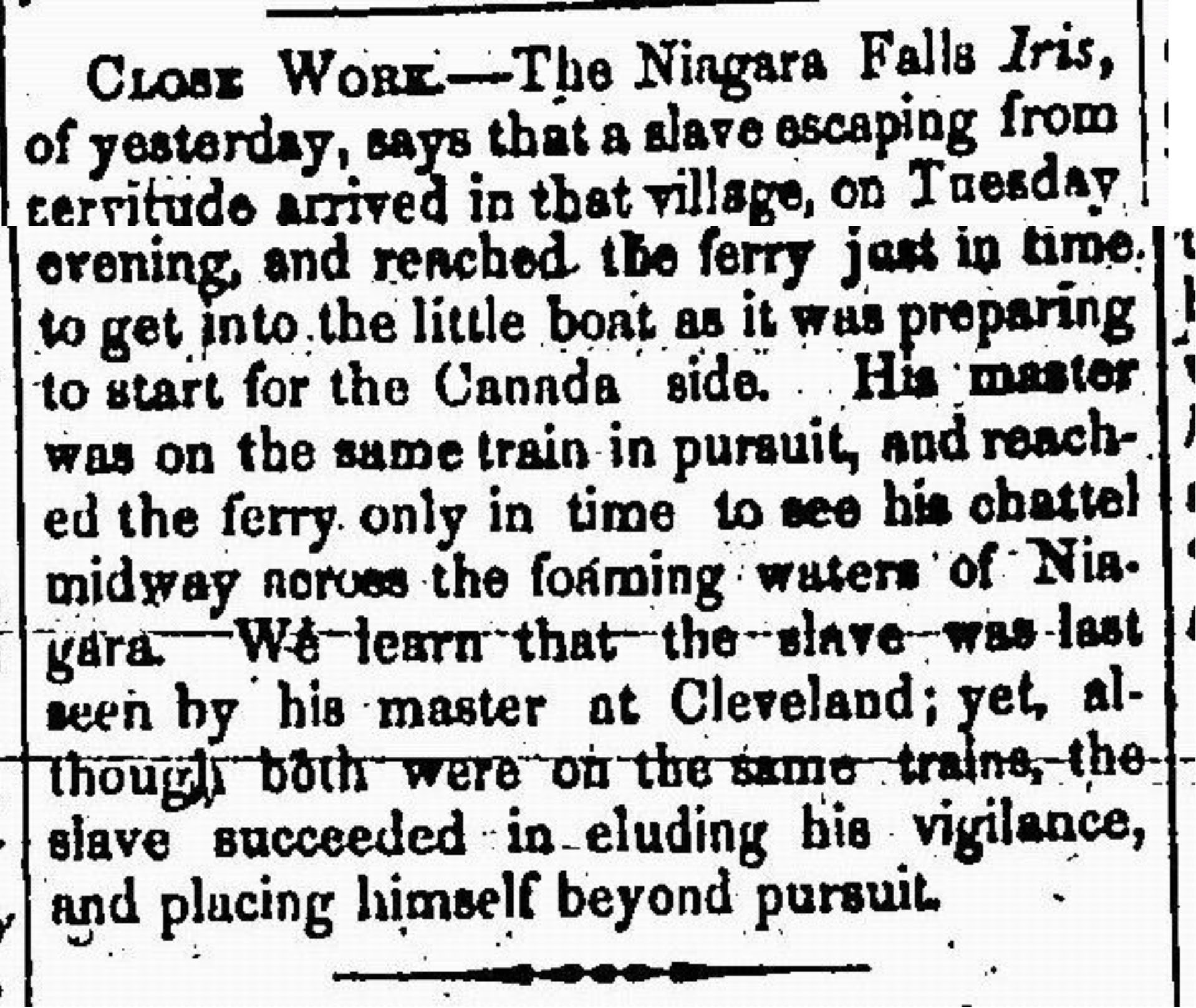The Underground Railroad was a secret organization. It was made up of people who helped African Americans escape from slavery in the southern United States. The people in this organization set up a system of routes that escaped slaves could travel to find freedom in the northern United States and Canada. In the 1800s (the 19th century) between 30,000 and 40,000 escaped slaves travelled to British North America (Canada) through the Underground Railroad.
(This article is a plain-language summary of the Underground Railroad in Canada. If you are interested in reading about this topic in more depth, please see our full-length entry on The Underground Railroad.)

Overview
The Underground Railroad was not a real railroad. It was a secret organization. The Underground Railroad started in the early 19th century. It was created by abolitionists. Abolitionists were people who wanted to stop slavery. The abolitionist movement included Christians, Indigenous peoples, and former slaves. It set up a system of routes that escaped slaves could travel to find freedom. These routes began in the southern United States. They ended in the northern United States and Canada. Canada and the northern United States made slavery illegal in the early 19th century (see Chloe Cooley and the Act to Limit Slavery in Upper Canada; Underground Railroad; Fugitive Slave Act of 1850; Slavery Abolition Act, 1833.)

Why Was This Secret Organization Called “The Underground Railroad”?
Abolitionists and escaped slaves used many words associated with the railroad. This is why their activities and the road to freedom they created came to be known as the Underground Railroad. For example, people who helped the escaping slaves in their journey north were called “conductors.” The word “conductor” means a person who manages a train. The words “cargo,” “package,” and “freight” were used to describe escaped slaves. The words “stations” and “depots” referred to safe houses. A safe house was a place where escaped slaves would stay for a brief time. “Ticket agents” planned the trips that escaped slaves took north. They also helped the escaped slaves contact “station masters” and conductors.
The routes taken by escaped slaves were called “lines.” The lines ended in the 14 northern states and Upper and Lower Canada. The word “terminus” was used to describe the end of a line. From the early 19th century until the mid-19th century approximately 30,000 to 40,000 slaves entered Canada along the Underground Railroad. Most settled in Upper Canada (Ontario). They soon became productive and important members of Canadian society. They farmed and created many religious, cultural, political, and community organizations. They also founded a wide variety of businesses.
The Underground Railroad continued until slavery was banned in the United States in 1865.

Prejudice and Racism
The first African Canadian settlers faced much prejudice and racism. Many Canadians would not hire them. They were often not allowed to live in the places in which they wanted to live. African Canadian children were often not permitted to attend the same schools as European Canadians. European Canadian parents did not want their children to be educated in the same schools as African Canadian children (see also Segregation of Black People in Canada.)
During the 19th century many African Canadians fought against the prejudice they faced. They founded their own schools and struggled for the right of equal access to education. They also struggled to win the right to live where they wanted to live and obtain good jobs. African Canadians continued to fight for their rights during the 20th century. It was not easy. In their search for freedom, early Black settlers in Canada worked hard to make a better life for themselves, their families and their fellow citizens.

 Share on Facebook
Share on Facebook Share on X
Share on X Share by Email
Share by Email Share on Google Classroom
Share on Google Classroom








